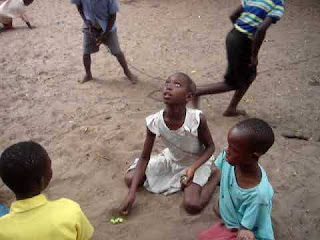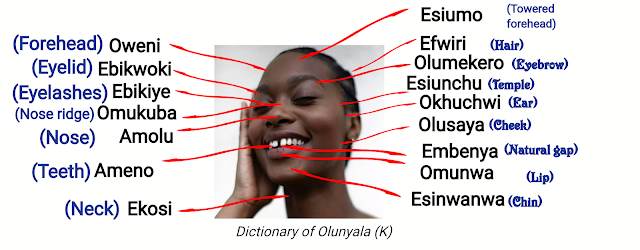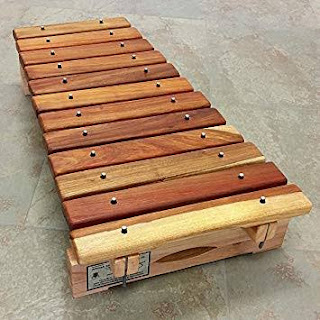ABANYALA BA KAKAMEGA: Types of Fish
The Olunyala (K) is a sub-dialect of Luhya language spoken by the Abanyala of Kakamega. The Language is internationally coded as ISO 939-3 nle.
In Olunyala (K) fish is known as eng'eni in both plural and singular. The following are names for different types of fish.
a) Names of different types of fish in Olunyala (K)
- Efulu- it is a small fish which has a forked tail fin; the haplochromis sp
- Embiri- largest type of tilapia or dolphin species over 2m that are found in slightly deep waters. Also a name for the biggest fish that was believed to have the ability to swallow people.
- Echachu- arapaima
- Ekhunga- eel; anguilla sp
- Emanje ya omufumu- Red tilapia

Emanje y'omufumu - Emanje embwiru- dark tilapia.
.webp)
Emanje - Emirye- shark
- Emonye- marbed lungfish
- Emputa- Nile perch
- Endere- similar to tilapia
- Eningu- Gregoris labeo
- Esemenye- Clarote
.jpeg)
Esemenye - Eseu- young catfish
- Esibambala- dried and openned fish
- Esipalapapa-
- Esire- rippon Fall barb
- Esitonge-
- Esurubana-
- Etuli- middle aged catfight
- Epopo- Elephant fish

Epopo - Kisinja- barbel fish. it has short barb at the mouth.
- Namasyolo- the limnothrissa sp. It resembles a lizard.
- Nameeno- shark
- Namuluki- Elephant nose fish.

Namuluki - Oluyoko- Mature catfish
- Omukoye- mudfish

Omukoye - Owutura- Ray finned fish of the silver cyprinid species.
b) Key vocabularies related to fish processing
- Amawuyiani- eggs that are found inside a fish. A good delicacy to the children for they are beileved to aid in speech development.
- Ekhe- the after-smell of fish after eating which was removed by sap from leaves of a tree called omusubangira.
- Okhuhalakacha- process of removing scales from fish.
- Okhulata'ngeni- Process of expertly removing the entrails of the fish
- Okhuachula- Process of splitting the fish open for purposes of drying or smoking.
- Okhusika- the process of smoking fish for preservation.
- Omuwasu- fish meat
- Okhuhanga- the process of storing dry fish in ash
c) Key methods used in harvesting fish
Abanyanyala, having stayed in forest and near rivers, had many methods of fishing. These were:
- Omulowo- (hooks). They had omuloho kwa omachaku (barbed hook) and omuloho kwa kirimiti (no barbs). Swamp earthworms, white ants, ugali and some seeds were used as baits. They used the shallow waters hook with a sinker or the deep waters hook with a floater. Big fish were trapped with hooks baited with meat or small fish and left overnight in the river.
- Owulalo- blocking a river using sticks across a river. This was followed by going upstream and wading in water to make the fish move to the trap end.
- Ebamo (traylike fishing basket), It was dipped in water and lifted to scoop fish.
- Olukhanda- nets made from strings of a plant called olusianyama or fibre from the tendrils of omukombera. It produces strong small strings equivalent to the synthetic fishing rods.
- Okhunaaba- Trained divers followed and trapped fish under water by hands. Remember, the water in rivers was clean and fish could be seen.
- Okhukhuya (using leaves tied together),
- Esiwu- A woven conical structure as trap put in water.
- Olukwira- It was a circular trap, with an opening, constructed in water with sticks. Fish food was placed in it and checked the next day. The fish were ambushed and trapped from inside.
- Ewuli- cylindrical structure with constriction in muddle. Fish food was put in it and then it was securely placed under water. Once fish entered, it could not get out.
- Efumo- spears. They were made from reeds called amateka.
- Okhuchukhira- using momentarily intoxicating fish herbs poured in small stream. These leaves did not kill the fish. The leaves were collected, mashed, mixed with a little water and poured in a river. After some time, intoxicated fish came to the surface and were picked by hand.
- Omukono-




Comments
Post a Comment